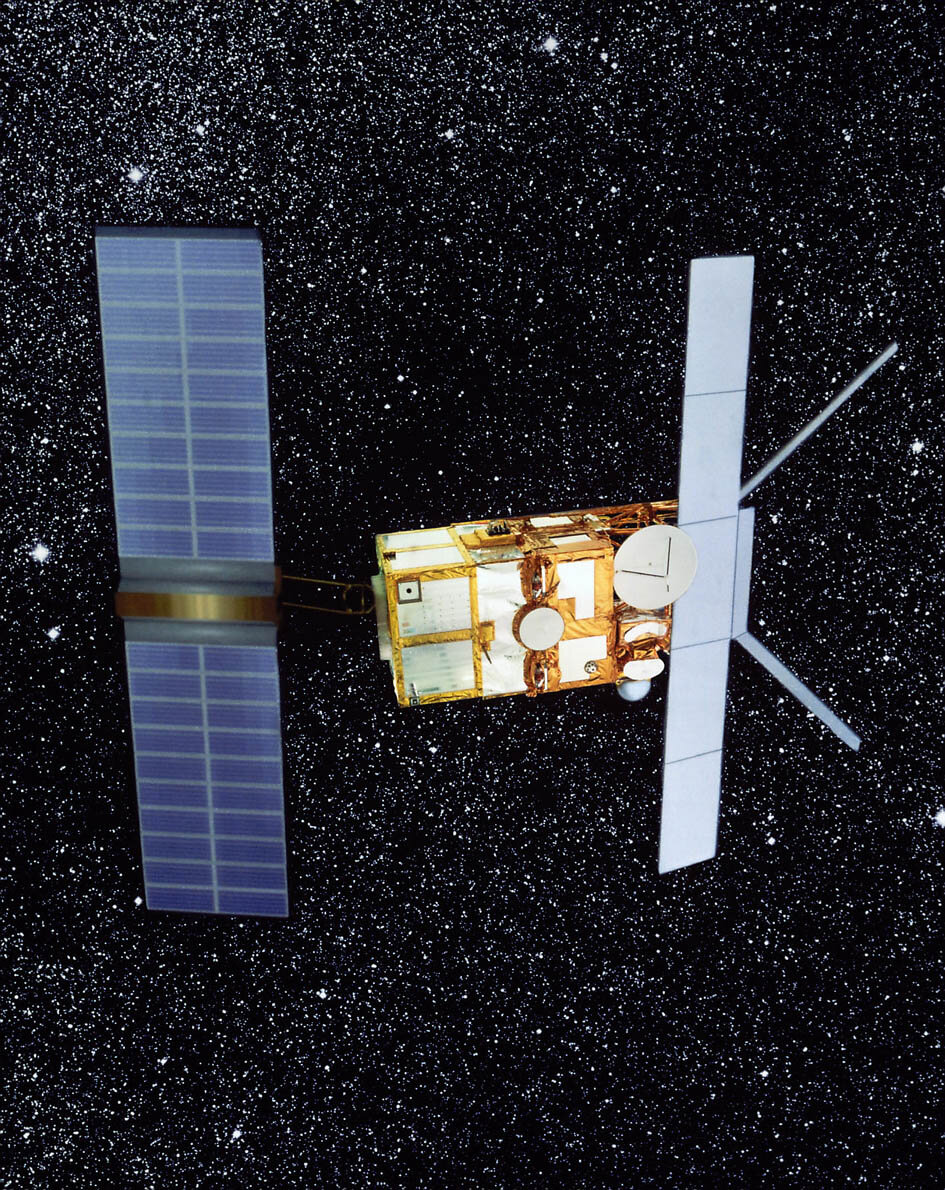One of the largest reentries in recent years, ESA’s ERS-2 satellite is coming down this week.
After almost three decades in orbit, an early Earth-observation satellite is finally coming down this week. The European Space Agency’s (ESA) European Remote Sensing satellite ERS-2 is set to reenter the Earth’s atmosphere on or around Wednesday, February 21st.
A Trail Blazing Mission
Launched atop an Ariane-4 rocket from the Kourou Space Center in French Guiana on April 21st, 1995, ERS-2 was one of ESA’s first Earth observation satellites. ERS-2 monitored land masses, oceans, rivers, vegetation and the polar regions of the Earth using visible light and ultraviolet sensors. The mission was on hand for several natural disasters, including the flood of the Elbe River across Germany in 2006. ERS-2 ceased operations in September 2011.
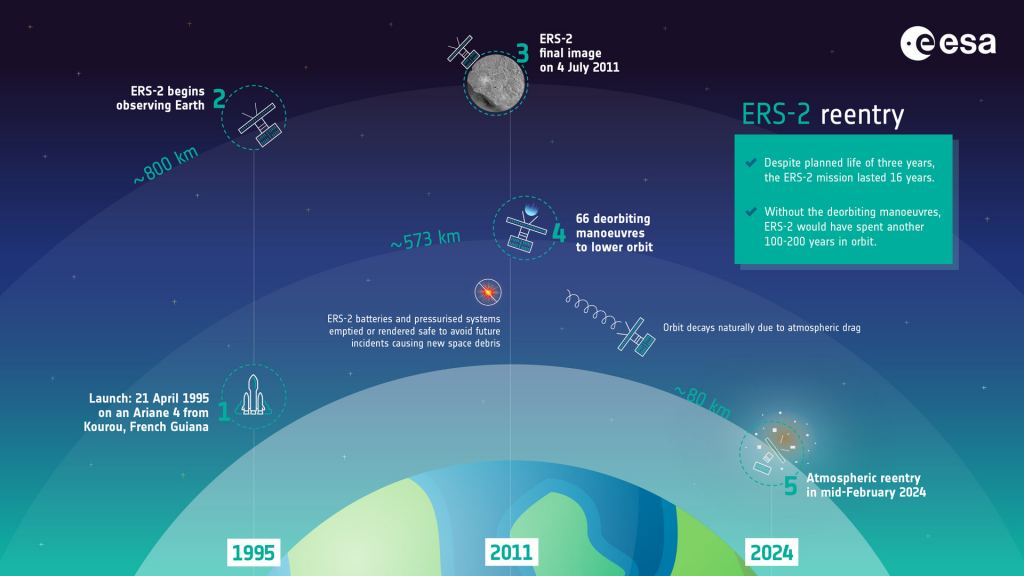
ERS-2 was placed in a retrograde, Sun-synchronous low Earth orbit, inclined 98.5 degrees relative to the equator. This orbit is typical for Earth-observing and clandestine spy satellites, as it allows the mission to image key target sites at the same relative Sun angle, an attribute handy for image interpretation.

The Last Days of ERS-2
Reentry predictions for the satellite are centered on February 21st at 00:19 Universal Time (UT)+/- 25 hours. As we get closer, expect that time to get refined. The mass of ERS-2 at launch (including fuel) was 2,516 kilograms. Expect most of the satellite to burn up on reentry.
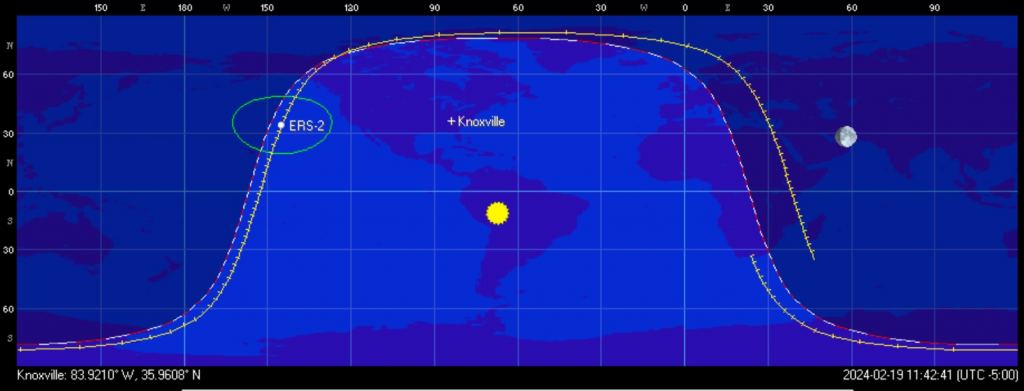
For context, recent high profile reentries include the UARS satellite (6.5 tons, in 2011), and the massive Long March-5B booster that launched the core module for China’s Tiangong Space Station in late 2022 (weighing in at 23 tons).
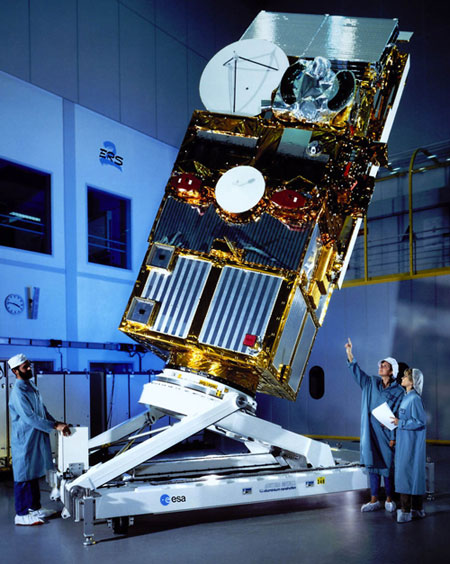
ESA passed its first space debris mitigation policy in 2008, 13 years after ERS-2 was launched. In 2011, ESA decided to passively reenter the satellite, and began a series of 66 deorbiting maneuvers to bring its orbit down from 785 kilometers to 573 kilometers. Its fuel drained and batteries exhausted, ERS-2 is now succumbing to the increased drag of the Earth’s atmosphere as we near the peak of the current solar cycle.
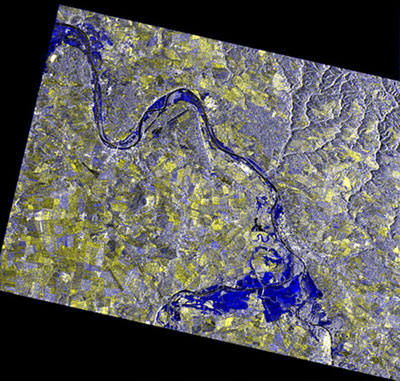
Tracking the Reentry
Tracking the satellite is as simple as knowing where and when to look. The ID number for ERS-2 is 1995-021A/23560. ESA has a site set up dedicated to tracking the decay of ERS-2. Aerospace.Org, Space-Track and Heavens-Above are other good sites to follow the end of ERS-2.
Expect the satellite to be a real ‘fast mover’ on its final passes. We saw UARS on its final orbit, flashing as it tumbled swiftly across the sky.
Taking out ERS-2 highlights the growing dilemma posed by space junk. There are currently over 25,800 objects in Earth orbit. That amount is growing exponentially as the annual launch cadence increases. 2023 saw a record 212 launches reach orbit, and 2024 is on track to break that number. The rise of mega-constellations such as SpaceX’s Starlink is adding to this burden.
The Age of Space Debris
Space junk adds to the number of artificial ‘stars’ seen whizzing across the night sky, impacts astronomical sky surveys, and poses a hazard to crewed missions and the International Space Station and the Tiangong Space Station. Reentries also contaminate the atmosphere, and a recent study suggests that mega-constellations may even impact the Earth’s magnet field. And while it’s mainly wealthier countries in the northern hemisphere that are launching satellites, the global south disproportionately bears the brunt of uncontrolled reentries.
Finally, all of these are consequences we don’t fully understand and are worthy of further study. For now, you can still track the demise of ERS-2, as it comes to a fiery end this week.

